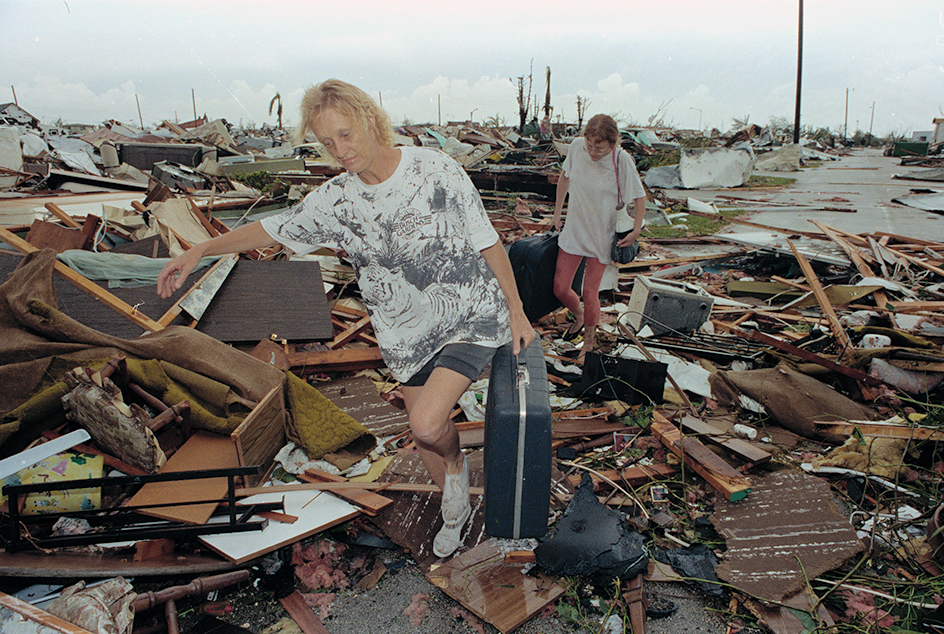Hurricane Andrew was one of the most destructive storms ever to strike the United States. The August 1992 hurricane killed 65 people, left about 250,000 people homeless, and caused about $26 billion in property damage. Most of the damage occurred in Dade County (now Miami-Dade County) in southeastern Florida. The city of Homestead, a densely populated area south of Miami, was struck particularly hard. About 90 percent of its buildings were destroyed or damaged.

Hurricane Andrew began as a tropical wave that crossed from the western coast of Africa to the Atlantic Ocean on Aug. 14, 1992. A tropical wave, also called an easterly wave, is a bend in the flow of surface air that produces a low pressure area with a line of showers and thunderstorms that drifts across the Atlantic from east to west. The developing storm became a tropical depression on August 16. A tropical depression is a low-pressure area surrounded by winds that have begun to blow in a circular pattern. On August 17, the winds were strong enough for weather observers to reclassify the tropical depression as a tropical storm and give it a name—Andrew. The storm reached hurricane strength on the morning of August 22. On August 23, the storm first reached Category 5 level—that is, a “devastating” hurricane capable of reaching wind speeds above 155 miles (250 kilometers) per hour. Hurricane Andrew moved westward over the Bahamas, where high winds and storm surges (rapid changes in sea level) caused much damage. On the Bahamian island of Eleuthera, four people were killed and many homes were destroyed.
At about 5 a.m. on August 24, Andrew made landfall near Homestead, Florida, with sustained winds of about 165 miles (266 kilometers) per hour. Some gusts were measured at up to 175 miles (282 kilometers) per hour. For about four hours, the hurricane continued westward across southern Florida. About 25,000 homes were completely destroyed, including nearly all the mobile homes in southern Dade County. In addition, about 100,000 homes suffered damage, and hundreds of thousands of people were left homeless.
After leaving Florida, the storm moved northwest across the Gulf of Mexico. Early on August 26, it made a second landfall in a sparsely populated part of southwestern Louisiana. Although less powerful than when it first struck Florida, the hurricane caused a number of deaths as well as much flooding and damage. The storm moved more slowly and weakened quickly as it continued northward. After causing heavy rain and several tornadoes along its path, it finally died out in Pennsylvania.
Hurricane experts credited Florida and Louisiana officials for well-executed evacuation plans that helped keep the death toll relatively low. In Florida, 44 people were killed directly or indirectly by the hurricane. In Louisiana, 17 people died. The estimated damage total of $26 billion made Andrew the costliest disaster in U.S. history up to that time.
